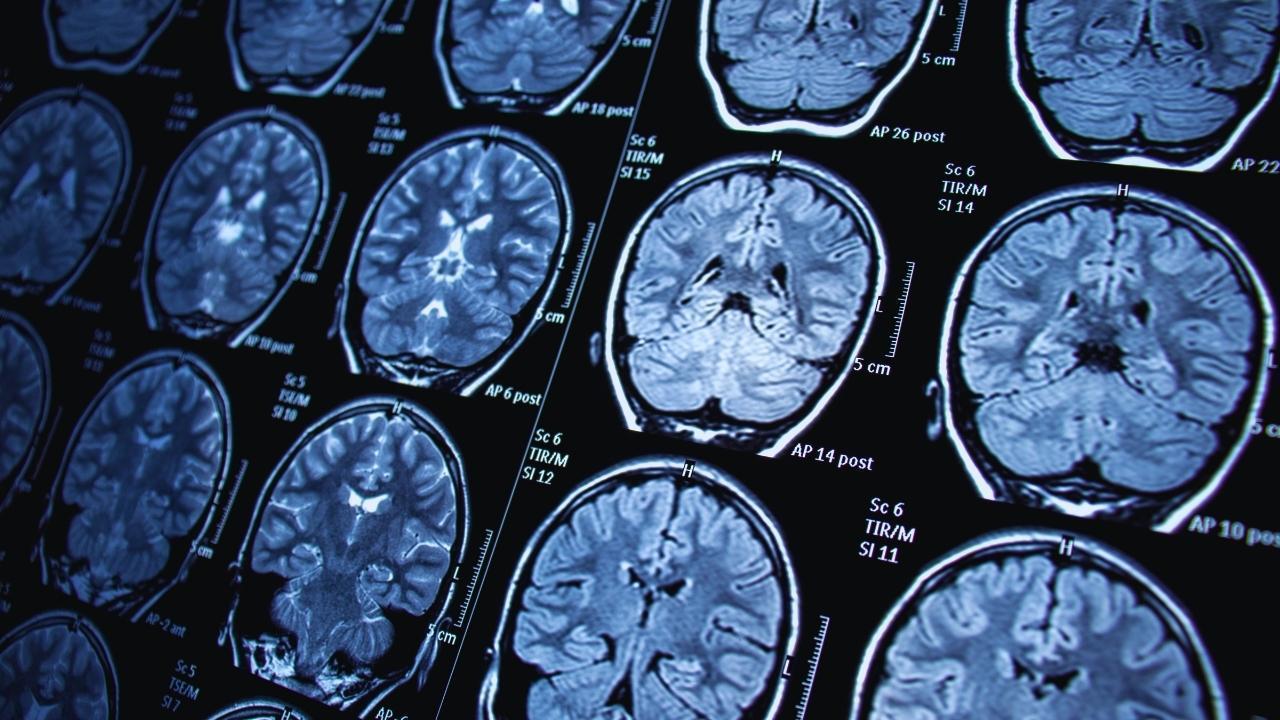
Join 10k+ people to get notified about new posts, news and tips.
Do not worry we don't spam!

Post by : Anish
We stand today at a turning point: the bridge between mind and machine, once the province of science fiction, is rapidly becoming real. Brain-computer interfaces (BCIs) and neurotechnologies are powering innovations that were once unimaginable, enabling people with paralysis to speak again, enhancing prosthetic control, and even gesturing toward immersive experiences that blur the line between brain and device. But with that promise comes deep complexity: ethical, technical, regulatory, and human.
This article charts the trajectory of BCIs in 2025: where we are, how we got here, what’s possible now, where we might go, and what we must reckon with.
BCIs broadly span a spectrum. On one end are invasive systems, where microelectrodes or implantable arrays rest on or within brain tissue, capturing high-fidelity neural signals. On the other end are noninvasive systems, such as EEG headbands or caps, which read electrical activity from the scalp. A middle path is partially invasive approaches — like endovascular interfaces — that aim to combine signal quality with lower risk.
Each approach carries trade-offs: invasive methods yield stronger signals and finer control but come with surgical risk, long-term biocompatibility issues, and cost. Noninvasive systems are safer and more accessible, but struggle with noise, lower resolution, and signal ambiguity.
Recent advances in endovascular BCI techniques — threading electrodes via blood vessels — represent an intriguing compromise. These promise improved safety profiles while preserving stronger signal quality than scalp reads.
One of the most striking advances in recent years has been restoring speech or communication via BCI in people who cannot speak. In pioneering experiments, researchers implanted sensors in the brains of individuals with paralysis or neurological injury, decoding neural signals when they attempted speech and converting those into audible or textual output. That restores a deeply human capability: conversation.
The speed of conversion is also critical. Earlier efforts suffered from delays between the person thinking a phrase and the system rendering it out loud. Newer systems are pushing toward real-time translation, improving conversational flow.
Beyond speech, BCIs are being used to restore or augment motor functions. For instance, individuals with paralysis may control robotic limbs, exoskeletons, or cursor movement purely by thought. BCIs decode brain patterns associated with intended movement and translate them into device commands.
In neurosurgery and rehabilitation, BCIs offer new promise for recovery from stroke, trauma, or degenerative disease. They provide closed-loop interventions: sensing neural activity, computing adjustments, and modulating outputs to encourage neural rewiring or motor function.
Some of the most visible applications of neurotech are in consumer or “wearable” modes. EEG headbands for neurofeedback, attention tracking, or even simple control over devices are already on the market. The goal is to move from specialized labs into everyday life.
A notable development is wearable BCIs under research that hint at continuous, practical interface activity — devices that function outside the lab, reliably and comfortably.
The market for neurotechnology and BCIs is expanding rapidly. In 2024, the global neurotechnology BCI market stood near USD 2.89 billion. Projections suggest it could grow more than six-fold or more by 2035, with compound annual growth rates exceeding 19 percent.
Key players span medical device firms, tech startups, research institutions, and venture capital. Companies like Neuralink, Synchron, Paradromics, Precision Neuroscience, OpenBCI, BrainCo, and others are pushing frontiers in hardware, signal processing, and AI models.
One of the biggest technical challenges for BCIs is reliably deciphering neural signals amid noise, artifacts, and variability. Here, modern machine learning — especially attention mechanisms and transformer models — are proving transformative. These models can better parse temporal, frequency, and spatial patterns in EEG or cortical data, boosting accuracy in interpreting human intent.
Integrating multimodal signals (such as combining EEG with other physiological markers) is another frontier, helping disambiguate neural context and improve system robustness.
Beyond passive reading, future BCIs may actively stimulate neural circuits with light, enabling bidirectional interfaces. Two-photon optogenetic stimulation — a technique that can precisely target individual or small groups of neurons — is being explored for integration into brain-machine interfaces. This could pave the way for much finer control, and even new forms of sensory feedback or memory modulation.
BCIs are venturing into areas of mood, cognition, and psychiatric health. One trial in the U.K. will test an implant using ultrasound to adjust neural clusters for mood enhancement, depression treatment, or therapeutics for OCD, addiction, or epilepsy. This is not just reading brain signals—but intervening in brain circuits beyond motor or speech domains.
Wireless implants that modulate brain activity to relieve chronic pain or psychiatric symptoms — without wires or batteries — are also emerging. Such devices promise continuous, adaptive interventions.
In 2025, BCIs are making headlines not just for potential, but real firsts. Paradromics, for example, recently conducted human tests of its Connexus implant, verifying its ability to record brain electrical signals in a patient.
Synchron is embedding its BCI system with Nvidia AI and the Apple Vision Pro, allowing paralyzed users to control home devices with thought in real environments — not just in lab demos.
Precision Neuroscience earned FDA 510(k) clearance for its Layer 7 cortical interface in 2025, enabling its use for limited durations in human subjects. Wikipedia
Meanwhile, new BCIs are being used to restore speech in individuals paralysed by stroke by converting neural intent into natural spoken words. AP News+1
These advances signal that BCIs are stepping out of laboratories and into clinics and real life.
Implants face biological reactions: scar tissue, electrode degradation, signal drift, and hardware failures. Ensuring stable performance over years or decades is a major engineering hurdle.
Invasive BCIs require surgery with inherent risks: brain damage, infection, hemorrhage, or unintended neural disruption. Even minimally invasive or endovascular approaches must meet rigorous safety standards.
If your brain is linked to a device, who controls the data? Could our thoughts be decoded, intercepted, or manipulated? These questions strike at identity, freedom, and personhood. Inaccurate decoding might misinterpret intent, or control may feel external — raising concerns about agency. Wikipedia+1
Existing medical device regulations are ill equipped for advanced BCIs. Implantable intelligent devices may require nuanced oversight: neural privacy, software updates, networked connectivity, firmware integrity, and post-market monitoring. Recent proposals suggest new regulatory frameworks and ethical guardrails tailored to BCI risks. arXiv
Advanced BCIs may first be accessible only to the privileged — or to those in wealthy health systems. This threatens to deepen disparities: who gets to augment or access neurotech first?
Once BCIs can restore function, the next frontier is enhancement: better memory, attention, creativity. But which enhancements are ethical? Where lies the line between therapy and augmentation?
To responsibly bring BCIs into broader use, multiple domains must evolve simultaneously:
Interdisciplinary Design & Ethics
Engineers, neuroscientists, ethicists, clinicians, patient advocates must co-design systems. Respecting autonomy, mental privacy, and patient identity is as critical as signal fidelity.
Adaptive Regulation & Oversight
Governments must innovate regulation that anticipates software updates, data rights, security audits, and liability for brain-device interactions.
Open Standards & Interoperability
Encouraging open protocols, transparent models, and interoperability will avoid vendor lock-in and support long-term maintenance.
Robust Clinical Trials & Longitudinal Studies
Long-term outcome data — not just on device performance but on mental health, identity, safety — are essential to validate BCIs broadly.
Public Engagement & Education
Societies need to engage with questions: What does it mean to extend our minds? How do we consent? How do we protect vulnerable users? Public discourse should guide development, not just technical possibility.
Equitable Access & Subsidies
To avoid stark divides, policies should support access in underserved populations, subsidize neurotech for functional disability, and ensure maintenance, spare parts, and software support across socioeconomic strata.
In 2025, BCIs are no longer “tomorrow’s” tech. They are evolving at the intersection of medicine, AI, and human aspiration. The next decade may see:
Widespread noninvasive BCIs that allow seamless hands-free control over VR, AR, smart devices, even personal computers.
More robust invasive implants with modular upgrades, self-healing electrode materials, and minimal surgical needs.
Augmented cognition: memory assistance, attention boosting, mood stability — if ethical frameworks permit.
Neural ecosystems collaborating with AI: your neural states inform systems that adapt, predict, and optimize your experience.
Hybrid sensory modalities — linking visual, auditory, haptic functions via brain interfaces, morphing our perception of reality.
Yet, each step forward must walk hand in hand with responsibility.
This article presents an overview of developments, challenges, and prospects in brain-computer interface technology based on current research, news reports, and expert commentary. It does not constitute medical, legal, or ethical advice. The field of neurotechnology is rapidly evolving, and actual outcomes, risks, or capabilities may differ over time.










JioHotstar Launches ‘Pitch To Get Rich’ Reality Show for Fashion Startups
JioHotstar’s new show ‘Pitch To Get Rich’ features 14 fashion startups competing for Rs 40 crore fun

Kantara Chapter 1 Box Office Day 1 Rishab Shetty Film Hits ₹60 Cr
Rishab Shetty’s Kantara Chapter 1 collects ₹60 crore on Day 1, breaking records across India with hu

FIA Declares Heat Hazard for Singapore F1 Race Due to Extreme Heat
FIA applies heat hazard rule for Singapore Grand Prix as high heat and humidity challenge F1 drivers

Trapeze Artist Dies After Fall at German Circus Show
A 27-year-old trapeze artist died in Germany after falling during a circus show. The tragic accident

Dhanashree Verma Reveals Yuzvendra Chahal Cheated Early in Marriage
Dhanashree Verma opens up on her divorce from Yuzvendra Chahal, revealing he cheated within months o

Aishwarya Rai with Aaradhya Spotted in Paris Ahead of Fashion Show
Aishwarya Rai Bachchan and daughter Aaradhya spotted in Paris ahead of L'Oréal Paris Fashion Week, d